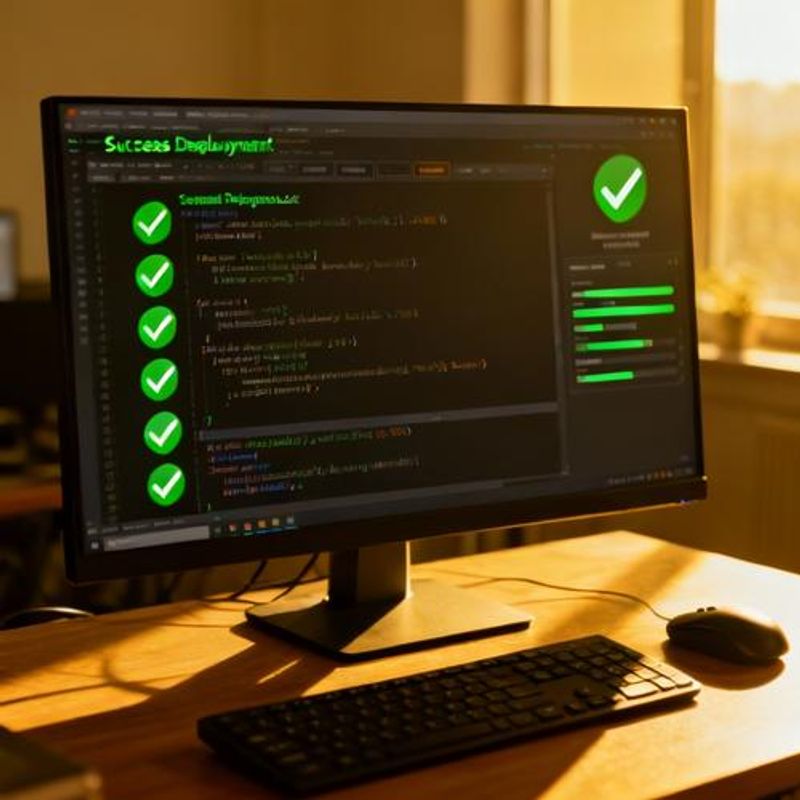Migrating From Old C AI Website Architectures: A Developer's Complete Guide to Modern AI Integration

Still maintaining that old C AI website that's becoming increasingly difficult to scale and integrate with modern AI services? You're not alone. Many developers find themselves stuck with legacy C-based AI implementations that were cutting-edge years ago but now feel like digital fossils. This comprehensive guide will walk you through the entire migration process, from assessment to deployment, helping you modernize your AI website architecture without losing critical functionality or data.

Why Your Old C AI Website Architecture Needs Updating
Legacy C-based AI websites face mounting challenges in today's rapidly evolving tech landscape. Memory management becomes increasingly complex as AI models grow larger, while integration with modern APIs requires extensive workarounds. Security vulnerabilities in older C libraries pose significant risks, and scaling limitations make it nearly impossible to handle modern traffic loads. For developers maintaining these systems, the technical debt accumulates daily, making feature development slower and more error-prone. The target audience for this migration includes backend developers, DevOps engineers, and technical leads responsible for AI-powered websites built on legacy C frameworks.
Quick Migration Roadmap: What You Need to Know
Before diving deep into the migration process, here's your executive summary of the key steps and considerations:
- Assessment phase typically takes 2-4 weeks for comprehensive code auditing
- Choose between gradual migration (6-12 months) or complete rewrite (3-6 months)
- Modern alternatives include Python/FastAPI, Node.js/Express, or Go-based architectures
- Data migration requires careful schema mapping and validation protocols
- Performance optimization can achieve 40-60% improvement in response times

Step-by-Step Migration Strategy
Start with a comprehensive audit of your existing C codebase. Document all AI model implementations, data processing pipelines, and external integrations. Create a dependency map showing how different components interact. This foundation helps you identify critical paths and potential bottlenecks early in the process.
Architecture Selection and Technology Stack
Choose your new architecture based on specific requirements. Python with FastAPI offers excellent AI library support and rapid development. Node.js provides JavaScript ecosystem benefits and real-time capabilities. Go delivers superior performance for high-throughput scenarios. Consider microservices architecture to isolate AI processing from web serving, enabling independent scaling and deployment.
Data Migration and Model Conversion
Extract your AI models from the C implementation and convert them to standard formats like ONNX or TensorFlow SavedModel. Migrate your database schema gradually using tools like database migration frameworks. Implement data validation checkpoints to ensure accuracy throughout the process. Test model performance extensively to verify that converted models maintain prediction accuracy.
Integration and Testing Protocols
Implement parallel running systems during the transition period. Use feature flags to gradually route traffic to the new system. Set up comprehensive monitoring and alerting to catch issues early. Create automated testing suites that compare outputs between old and new systems to ensure functional parity.
Practical Migration Templates and Code Examples
Here's a practical checklist for your migration project:
**Pre-Migration Checklist:**
• Document all C functions and their purposes
• Identify external dependencies and libraries
• Map data structures and memory allocation patterns
• Catalog AI model files and training data
• List all API endpoints and their expected behaviors
• Create backup strategies for rollback scenarios
**API Conversion Example:**
Old C CGI approach → Modern REST API
Replace manual HTTP header manipulation with framework-based routing
Convert struct-based data handling to JSON serialization
Migrate from custom memory management to garbage-collected languages

Common Migration Pitfalls and How to Avoid Them
Many developers underestimate the complexity of memory management differences between C and higher-level languages. Avoid direct translation of pointer arithmetic into array operations without considering performance implications. Don't rush the testing phase – subtle bugs in AI model conversion can lead to degraded prediction accuracy that's difficult to detect. Resist the temptation to migrate everything simultaneously; instead, prioritize critical components and migrate incrementally. Always maintain detailed documentation of changes to facilitate debugging and team onboarding.
Your Next Steps to Modernization Success
Successfully migrating from your old C AI website doesn't have to be overwhelming when you follow a structured approach. Start with a small, non-critical component to validate your migration strategy, then gradually expand to cover your entire system. Remember that modern AI tools and frameworks can significantly simplify tasks that required extensive custom C code in the past. Ready to begin your migration journey? Download our detailed migration timeline template and start planning your upgrade today. For complex migrations requiring additional AI integration capabilities, consider exploring modern AI development platforms that can accelerate your transition while ensuring robust performance and scalability.